While we're stuck amid a spring and summer unfortunately free of both Major League Baseball (so far) and the Hall of Fame's induction weekend because of the coronavirus pandemic, the Hall that so many of us visit in our mind's eye whenever we take stock of greatness or look back on baseball's history is open year-round. Last week, I mused about who the next Hall of Famer for each National League team might be; now it's time to tackle the American League.
For this exercise, I've chosen one player per team, generally the most worthy pending honoree, whether he's on the upcoming writers' ballot, still active or not yet eligible for inclusion, or stuck in Era Committee limbo. For each, the idea is to choose a player who's good enough for the Hall and could plausibly wear that team's hat on his plaque; that doesn't have to be a certainty. For a few teams, finding such a player means looking at an active one who's still a ways away but has a reasonable shot at getting there.
As with most Hall-related topics, I'm consulting my JAWS (Jaffe WAR score) system, which takes the average of a player's career WAR and seven-year peak WAR (Baseball Reference version for both) for comparison to that of the average Hall of Famer at his position. I'm open to considering other factors such as postseason and historical importance, and for PED-related candidates, I'm inclined to penalize only those players whose infractions date back to the testing and suspension era (2004 onward) -- but that's not to say all voters feel the same way.
Finally, I've divided up the players into three groups: overdue (deserving players on the current Baseball Writers' Association of America ballot or likely to be on the next appropriate Era Committee ballot), on track (active or recently retired players awaiting their time on the ballot) and OK, we'll see (mainly active players who have significant work to do before they fit into the other two categories, but also some historical long shots). Within each group, I've alphabetized by the team the player is representing.
BAL | BOS | CHW | CLE | DET
HOU | KCR | | LAA | MIN | NYY
OAK | SEA | TBR | TEX | TOR
Overdue
' Baltimore Orioles: Bobby Grich
Baltimore Orioles: Bobby Grich
Grich ranks seventh among second basemen in JAWS, higher than any Hall-eligible player (read: retired at least five years and not banned for life) whose name is not attached to PED issues. A career .266/.371/.424 hitter (with a 125 OPS+), he combined patience and pop at the plate with outstanding defense at second base. Playing in an infield that also included all-timers Brooks Robinson and Mark Belanger, he won four Gold Gloves, made three All-Star teams and was a starter on two division winners as an Oriole (1970-1976), then continued to star for the Angels, making three more All-Star teams while helping the Halos win three AL West titles.
Back problems forced him to retire at age 37, and he finished with 1,833 hits, a problem in that nobody from the post-1960 expansion era who finished with fewer than 2,000 hits has been elected by the writers or the small committees. Grich went one-and-done on the 1994 ballot and has yet to get a second look via the Modern Baseball Era Committee, a grave injustice.
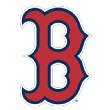 Boston Red Sox: Roger Clemens
Boston Red Sox: Roger Clemens
As with Barry Bonds, Clemens' place among the all-time greats is controversial because of his connections to PEDs and to the much-publicized legal battles he fought post-career. Nonetheless, his infractions date to the pre-testing era, and his accomplishments before he is alleged to have begun using PEDs would be enough to get him into Cooperstown. He won an AL MVP award and three of his seven Cy Young awards in his 13 seasons (1984-1996) with the Red Sox while notching more than half of his 354 wins, 4,672 strikeouts and 139.2 WAR there before moving on to Toronto, New York and Houston. In all, he's got a claim as the best post-World War II pitcher and ranks third in JAWS (102.6) behind only Walter Johnson and Cy Young himself.
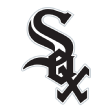 Chicago White Sox: Minnie Minoso
Chicago White Sox: Minnie Minoso
Hall of Famer Orlando Cepeda called Minoso "the Jackie Robinson for all Latinos," because the Cuban-born outfielder was the first Afro-Latino to reach the majors. After starring in the Negro Leagues, Minoso debuted in 1949 with the Indians, though it wasn't until two years later, when he was traded to the White Sox, that his major league career really got off the ground. From 1951 to 1961, he hit a combined .305/.395/.471 (134 OPS+) while averaging 16 homers, 18 steals and 4.7 WAR; during that time, he ranked in the AL's top 10 in batting average eight times, in on-base percentage nine times (including five in the top five) and in slugging percentage six times. Among AL players, only Mickey Mantle was more valuable over that span.
Minoso was clearly an impact player with Hall of Fame-caliber talent, and while the discrepancies with regard to his age -- he might have been born as early as 1922 or as late as '25 -- muddy the waters as to how much major league time he was deprived of, the math says at least two and possibly as many as five years. The loss of that time left him 37 hits short of 2,000. Brief cameos as a pinch hitter in 1976 and '80 might have distracted Hall voters from the merits of his candidacy, but to these eyes, he tops the list among candidates who should be elected by an Era Committee.
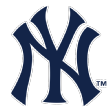 New York Yankees: Thurman Munson
New York Yankees: Thurman Munson
With seven All-Star appearances, three Gold Gloves, an AL MVP, a Rookie of the Year award and a prominent role on three pennant winners and two championship teams, Munson checks every box for a Hall of Fame candidate except longevity (he died in a plane crash at age 32 in 1979). A contact-oriented hitter with decent power (he maxed out at 20 homers but reached double digits six times in nine full seasons), he topped a .300 batting average five times, cracking the AL top 10 in each one, and finished with a career .292/.346/.410 line, good for a 119 OPS+.
Munson's 37.0 peak WAR ranks eighth among all catchers and 2.2 above the standard, while his 41.5 JAWS is 12th, 2.7 below. All that was missing, basically, was his playing out the string despite his chronically aching knees. In light of the tragic circumstances, it's ridiculous he wasn't elected in short order; he appeared on an Era Committee ballot for the first time this past December.
On track
 Cleveland Indians: CC Sabathia
Cleveland Indians: CC Sabathia
Manny Ramirez rates as one of the great right-handed hitters in the game's history, but his two PED suspensions have kept him off my virtual ballots and will do the same on my first actual one in December. As for Sabathia, a six-time All-Star and Cy Young winner who starred for the Indians from 2001 to 2008, his traditional numbers (251 wins and 3,093 strikeouts, the latter of which made him just the third southpaw to reach 3,000) are stronger than his advanced ones (62.5 career WAR, 39.4 peak WAR and 50.9 JAWS, compared to the starter standards of 73.3/50.0/61.6).
Nonetheless, his role in leading the Brewers to their first playoff appearance in 26 years in 2008, and then in helping the Yankees to a championship the following year -- both while working on short rest several times -- as well as his comebacks from knee issues and alcohol problems exemplify a player who commanded universal respect within the game, and who's widely regarded as an eventual honoree.
 Detroit Tigers: Justin Verlander
Detroit Tigers: Justin Verlander
While Lou Whitaker is 13th in JAWS, he finally got a turn on the Modern Baseball Ballot and should follow double play-mate Alan Trammell into Cooperstown, Verlander is the safer bet for the Tigers. Yes, he finally won his World Series ring and sealed the deal for eventual election with the Astros, but it was with Detroit -- which he helped reach the 2006 and '12 Fall Classics -- that Verlander made his bones. Six of his eight All-Star appearances, four of his five strikeout titles, two of his three no-hitters and his first Cy Young -- part of a dominant 2011 campaign in which he won the AL pitching triple crown, as well as MVP honors -- all came with the Old English "D" on his cap.
With the Astros, Verlander has blown past the 200-win mark (he's at 225), and by striking out a career-high 300 last year, he became the 18th pitcher to reach 3,000 for his career. The active leader among pitchers in JAWS (60.8), he's still going strong and will be an easy first-ballot choice once he's eligible.
 Kansas City Royals: Zack Greinke
Kansas City Royals: Zack Greinke
He has pitched for five other teams since being traded away in December 2010, but Greinke was drafted by the Royals in 2002 and put together his strongest season for them in '09, a year in which he led the AL in ERA (2.16), FIP (2.33) and WAR (10.4), the last of which trails only Randy Johnson's 10.7 in 2002 among all pitchers in this millennium. He has already surpassed 200 wins (205) and is in range of 3,000 strikeouts (2,622), as well as the JAWS standard for pitchers (59.6); at 36 years old, he still has some quality innings left in that right arm.
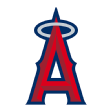 Los Angeles Angels: Mike Trout
Los Angeles Angels: Mike Trout
Trout is only 28 and apparently fated to lose at least half of this season due to the coronavirus pandemic. Nonetheless, he has already banked three MVP awards, bashed 285 homers and led the AL in WAR five times while ranking no lower than fifth in his three other full seasons. Via that dominance, he's already fifth all time in JAWS among center fielders at 69.2, 11.2 points above the standard and trailing just Willie Mays, Ty Cobb, Tris Speaker and Mickey Mantle. It will be a while before the Millville Meteor catches up to the Commerce Comet (87.4 JAWS), but he'll be an automatic selection by the time he hangs up his spikes.
 Minnesota Twins: Joe Mauer
Minnesota Twins: Joe Mauer
Don't let his final five seasons hitting at a league-average clip while playing first base -- a move necessitated by concussions and other injuries -- fool you. What Mauer did in his 10 seasons behind the plate is more than enough to merit a bronze plaque. He won an MVP award, three Gold Gloves, three batting titles (out of the eight won by all catchers, ever) and six All-Star selections. Despite his unusual height (6-foot-5), he was an excellent defender behind the plate, particularly when it came to pitch framing; via Baseball Prospectus' metrics, he was 65 runs above average for his career, value that's not even reflected in his WAR and JAWS.
On that note, his 39.0 peak WAR ranks fifth among all catchers, while his 47.2 JAWS places him seventh, three points above the standard; he's the only catcher among the top 11 not enshrined. That should change come in 2024.
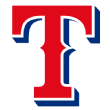 Texas Rangers: Adrian Beltre
Texas Rangers: Adrian Beltre
Until Beltre joined the Red Sox in 2010, he was often considered a disappointment for failing to live up to his 48-homer walk year in 2004. Had value metrics been in greater circulation during his time with the Dodgers and Mariners, however, they would have illustrated that the combination of his elite defense at third base and even league-average offensive contributions made him an exceptional player; from 1999 to 2009, he averaged 4.0 WAR per year, yet didn't make a single All-Star team.
Upon maturing as a hitter in Boston and then Texas, he turned in consistently elite performances, averaging 5.9 WAR from 2010 to '17. Thanks to the magic of social media, he also became a consistently entertaining player, particularly as an elder statesman. His combination of 3,166 hits, 477 home runs, 218 fielding runs (second only to Brooks Robinson among third basemen) and a No. 4 ranking in JAWS at the hot corner will make him a lock for election in 2024.
OK, we'll see
Altuve just turned 30 years old but already owns an MVP award, World Series ring and three batting titles, plus he's more than halfway to 3,000 hits (he has 1,568). With Ian Kinsler retired, Dustin Pedroia likely to follow and Robinson Cano probably ruled out due to his PED suspension, the pint-sized Astro is the only active second baseman with a reasonable chance of election. He still has a ways to go on the advanced-stat front (35.8 JAWS, 21.2 points below the standard), and the fact that he hasn't cleared 5.0 WAR since 2017 due to injuries that have limited him to just 261 games over the past two seasons rates as a concern, particularly given the tendency of second basemen to peak early.
The good news is that he has a long time to live down the stink of the Astros' sign-stealing scandal and the eye rolls regarding his weird tattoo story.
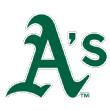 Oakland Athletics: Mark McGwire
Oakland Athletics: Mark McGwire
No modern player has been left to carry the weight of an era as has McGwire, whose prodigious home runs helped heal the wounds caused by the 1994 strike and whose ability to connect to the game's history while surpassing Roger Maris' record during the 1998 chase was lauded. Only after his retirement -- when the still-legal androstenedione and other PEDs were explicitly banned by MLB -- did the meaning of those homers change, and many of the same people who exalted him turned against him, piling on when they felt his 2010 admission was less than comprehensive.
As McGwire's sins date to the pre-testing era, I don't think they should be viewed as disqualifying, but then one must acknowledge that despite the 583 homers and 12 All-Star appearances, he's less than a slam dunk. Injuries limited him to just 7,660 career PA and 1,623 hits, though his power and plate discipline contributed to the replacement of so many of those potential hits with walks (1,317, to be exact). With 62.1 career WAR, 41.9 peak WAR and 520 JAWS, he's a few points below the standards for first basemen, but not egregiously so. Someday, he'll get the clear-eyed look he deserves from the voters, but it won't be soon.
 Seattle Mariners: Felix Hernandez
Seattle Mariners: Felix Hernandez
A major leaguer at 19 years old, an All-Star at 23, a Cy Young winner at 24 and a six-time All-Star by the time he turned 29, Hernandez appeared to be on a Hall-bound path circa 2015. Then, a combination of injuries, workload, lackluster conditioning and a stubborn resistance to adjustments caught up to him. Dethroned in Seattle, the King was on track to win a rotation spot in Atlanta before the pandemic stopped play, and so perhaps the last chapter has yet to be written regarding the 34-year-old righty. He has 169 wins, 2,524 strikeouts and 50.1 WAR to his name. If he can get to the round-numbered milestones in those first two categories, he has a shot at election, even if, like Sabathia, his JAWS is a little light.
Perhaps no player is more emblematic in the history of the Rays than Longoria, who in 2008 signed a below-market, long-term deal during his first week in the majors, proceeded to win AL Rookie of the Year honors and helped the team to its first pennant. Though he has made just two more All-Star appearances since, and is now a Giant, he has quietly amassed 297 career homers and 56.0 WAR while carrying a 121 OPS+.
The 34-year-old Longoria is 18th in JAWS among third basemen at 49.0, and one can make a stronger case for each of the hopefuls directly above him (Dick Allen, Sal Bando, Buddy Bell, Ken Boyer and Graig Nettles), but if Longoria keeps on chugging into his late 30s, he might wind up every bit as worthy.
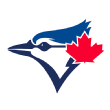 Toronto Blue Jays: Dave Stieb
Toronto Blue Jays: Dave Stieb
It's too early to anoint Vladimir Guerrero Jr. and too late to point to Roy Halladay, to say nothing of the fact that Clemens spent too little of his career in Toronto to fill this spot. Thus, it takes a stretch to fill the Jays' quota, and to these eyes, it comes down to John Olerud (58.1 career WAR, 48.6 JAWS) and Stieb (56.4 career WAR, 50.4 JAWS). The former is closer to the standards (5.8 points shy via JAWS) but ranked among the league's top 10 in WAR just three times. The latter, on the other hand, led the AL in WAR annually from 1982 to 1984, bookended by a pair of third-place rankings, as well as two more top-10 finishes.
A seven-time All-Star who played a major part in bringing the expansion Blue Jays to respectability, the hard-luck Stieb finished his career just 176-137 because he threw only 228⅔ innings after his age-32 season because of shoulder and back injuries and never finished higher than fourth place in the Cy Young voting because of middling won-loss records. Still, he was exceptional at run prevention, as his 122 ERA+ and six top-10 finishes in ERA attest. While not a particularly strong choice, according to JAWS, he's whiskers ahead of 300-game winners Don Sutton and Early Wynn and further ahead of Sandy Koufax, Whitey Ford and Dizzy Dean.


